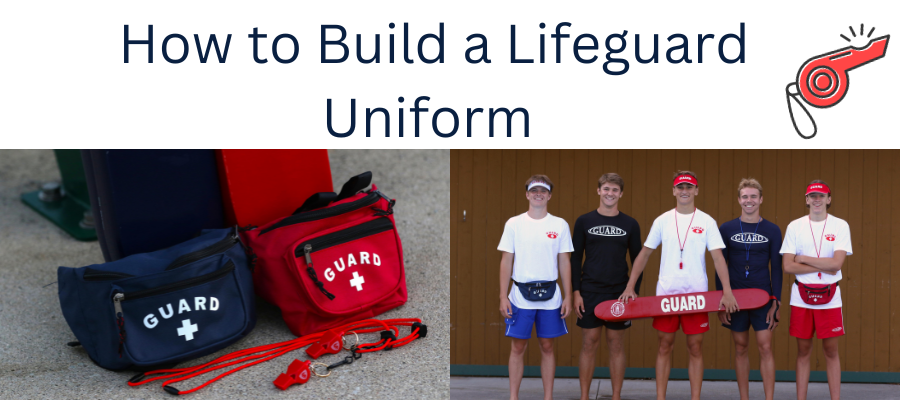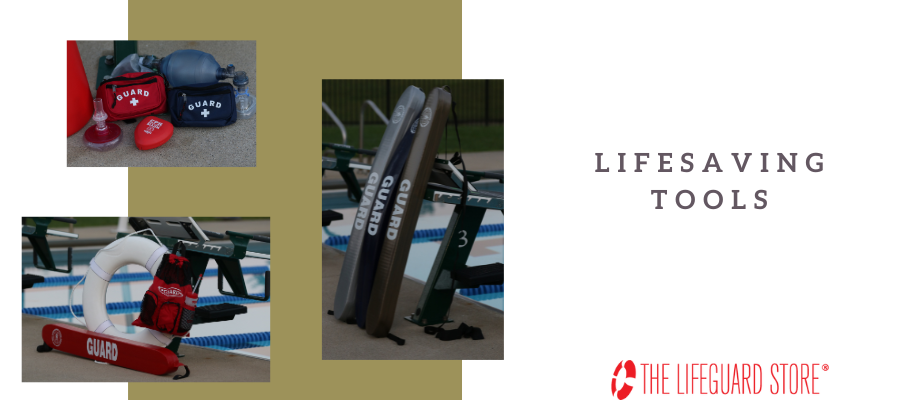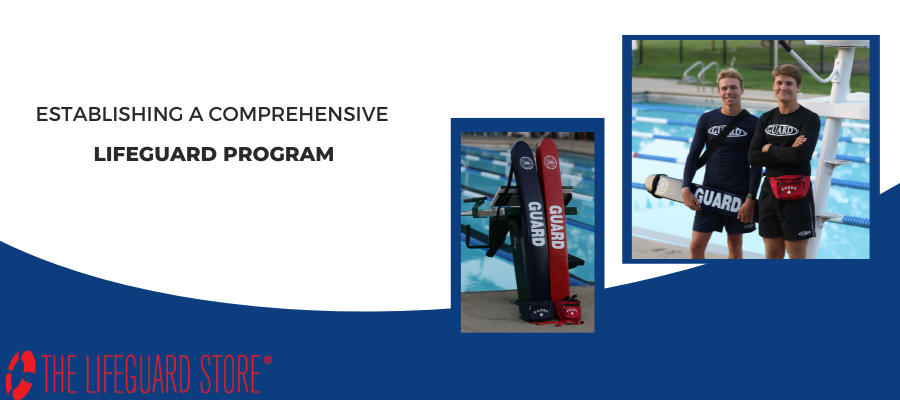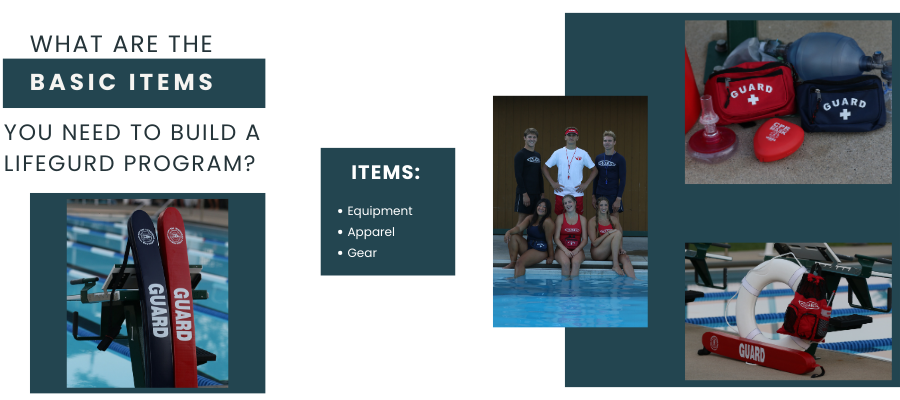How to Build a Lifeguard Uniform

Every lifeguard, whether experienced or just starting out, recognizes the significance of a well-constructed uniforms for lifeguard. It’s not just about looking professional; the right uniform ensures functionality, visibility, and comfort throughout a lifeguard’s shift. However, building the perfect custom lifeguard uniform involves a strategic combination of essential pieces of lifeguard gear.
Follow these tips to create the ideal lifeguard uniform, ensuring that you’re always ready to respond to any situation:
- Start With a Solid Base: The Lifeguard Swimsuit
Your swimsuit serves as the base of your lifeguard uniform. It should be comfortable, durable, and suitable for prolonged use in chlorinated or saltwater environments. Remember, as lifeguards are often in motion, swimsuits must provide the necessary mobility without any hindrances. While there are many styles available, it’s essential to choose one that aligns with the demands of your specific environment.
- Prioritize Visibility With a Lifeguard Shirt or Tank Top
Visibility is vital when it comes to lifeguarding. Beachgoers and pool attendees should be able to spot you instantly, even from a distance. Shop for a suit with bright colors, commonly red or yellow, with the word “LIFEGUARD” clearly printed. The type of shirt or tank top you choose will depend on your personal comfort and the requirements of your facility.
-
Look for a Durable and Functional Lifeguard Uniform and Gear
No lifeguard ensemble is complete without the right lifeguard gear. From whistles to rescue tubes, ensure you have gear that is easily accessible and durable and suits your custom lifeguard uniform. It’s essential to familiarize yourself with the gear, knowing exactly where each item is located so that if the need arises, you can access them promptly.
- Appropriate Footwear
Depending on where you’re stationed, you’ll need footwear that provides grip, comfort, and quick-drying capabilities. Sandals or slip-resistant shoes that drain water are popular choices. Remember, quick response times are vital in lifeguarding, so footwear that doesn’t hinder mobility is crucial.
- Find Versatile Outerwear
No matter the season, a lightweight, breathable jacket or windbreaker can be valuable for unexpected weather changes or cooler mornings and evenings.
-
Enhance the Lifeguard Uniform With Accessories
Caps or visors can provide necessary shade during sunny days, while sunglasses with UV protection will shield your eyes and enhance visibility. Again, the key is ensuring these accessories do not interfere with your primary responsibilities.
Building a custom lifeguard uniform is about blending function with visibility. Each piece of lifeguard gear should be chosen with care, always considering the demands of the role. A uniform speaks volumes, not only about what the lifeguard is wearing, but also about the standards and professionalism of the facility they represent. By following the above guidelines, you’re not only investing in your appearance, but also in the safety and confidence of those you are tasked to protect. Remember, when you wear your lifeguard uniform, you embody the trust and responsibility placed upon you. Choose wisely.
Share this post
Topics
- Swimming Tips
- 130513
- Fitness
- Prevention
- Technique
- Training
- Workout
- Contest
- POTW
- New
- Kirazies
- Swim Team
- Pool Equipment
- Digital Pace Clock
- Fins
- Swim Goggles
- Krazies
- Practice
- Breath control
- Pull
- Fuel
- Nutrition
- Tips
- Energy drinks
- Competition
- Events
- IMX
- Parent eductation
- Lunch
- Parent education
- Snacks
- Portable fuel
- Triathlon
- Breathing
- Goals
- Planning
- Preparedness
- Aerobic
- Anaerobic
- Hypoxic
- Cycle
- Age grouper
- Swim for life
- Age group
- Kids
- 11-12
- Meets
- Skills
- Swim Fins
- Spandex
- Polyester
- Speedo
- TYR
- Kiefer
- Dolfin
- Durafast
- Aqualast
- XLA
- PBT
- Endurance
- Recreation
- Swimming
- Suit
- Swimsuit
- Swim Caps
- Swim Safety
- Open Water Swimming
- Sim Safety
- Safer Swimmer
- Backstroke Flags
- Pool Flags
- Anti-fog Goggles
- Backstroke
- Swimming pool
- Turns
- Finishes
- Meters
- Yards
- Lycra Swimsuit
- Polyester Swimsuit
- Swimsuit Fabric
- Swimsuit Material
- Competitive Swimwear
- Learn To Swim
- Floaties
- Life jacket
- Life vest
- Racing Lanes
- Early workout
- Alarm
- Sleep
- Lifeguard
- Water Safety
- Mobile Friendly
- Lane Ropes
- Training Gear
- Kickboard Review
- Kickboard
- Olympic Swimmer
- Bathing Caps
- Lycra Caps
- Silicone Caps
- Latex Caps
- Swim Practice
- Swim Workout
- Pools
- Save our pools
- Motivation
- Swim Gear Advice
- Swim Sweepstakes
- Holiday shopping
- Gifts
- Holiday
- Thanksgiving
- Turkey day
- Holiday training
- 2014
- New Year
- Fun training
- Swimming Cramps
- Google Catalog
- Kiefer Catalog
- Swimsuit Catalog
- Lifeguard Catalog
- Swim Backpack
- Swim Cap
- Tech Suits
- Swim
- Christmas
- Swim Meets
- Swimming Trivia
- Swimsuit Sizing
- Swimming Stretches
- Swimming Injuries
- Swimmer Gifts
- Hand Paddles
- Olympic Swimming Comebacks
- Rio 2016
- Swimsuit Backs
- 15M Marker
- Dolfin Uglies
- Carb Loading
- Rescue Tube
- Underwater MP3 Player
- Swimming Songs
- Lifeguard Whistle
- Butterfly
- Swimming technique
- Technical suit
- Tech suit
- Usaswimming
- Ban
- Club swimming
- Olympic trials
- Age group swimming
- Arena
- Olympics
- World championships
- Super suit
Tags






Leave a Comment
Your email address will not be published. Required fields are marked *